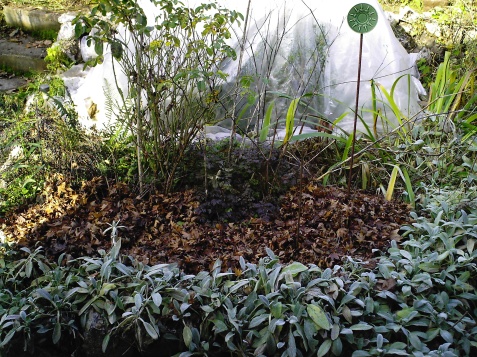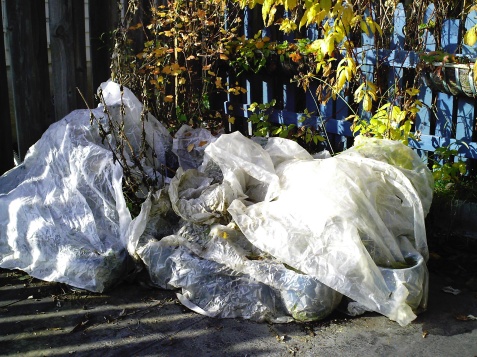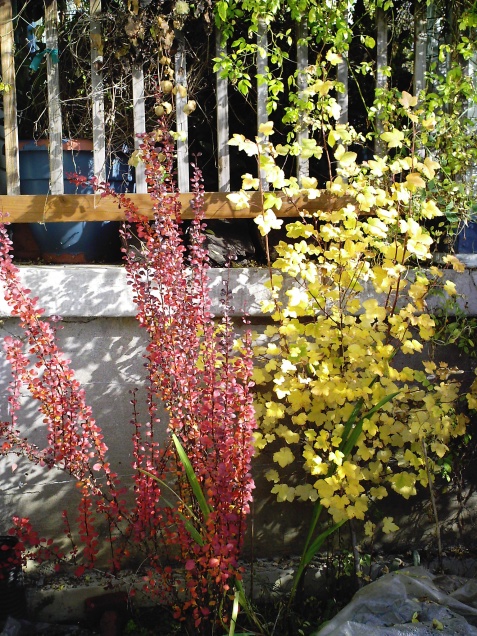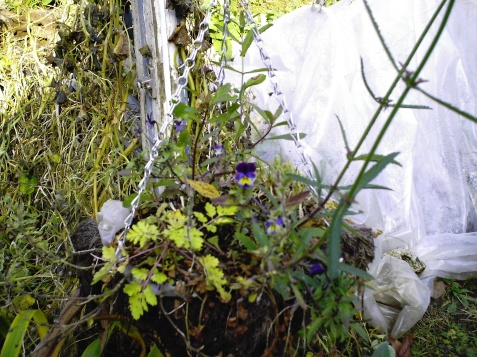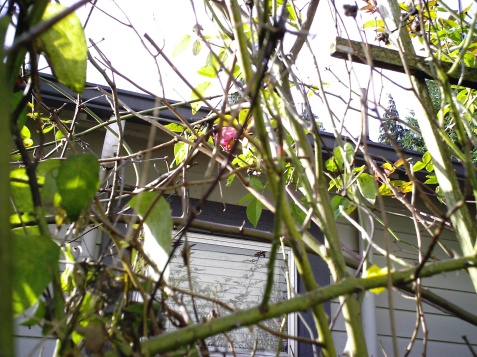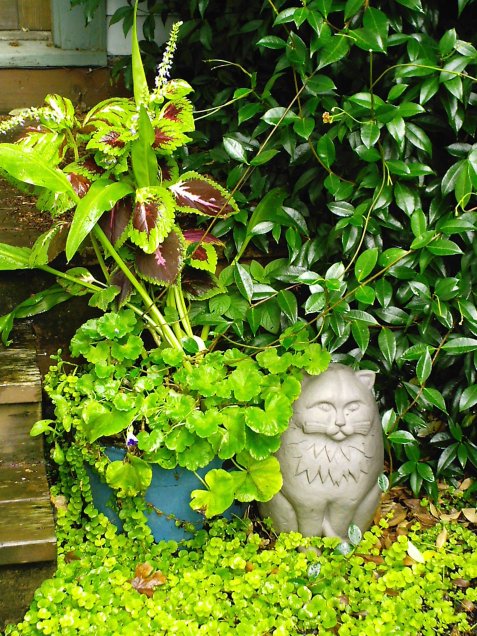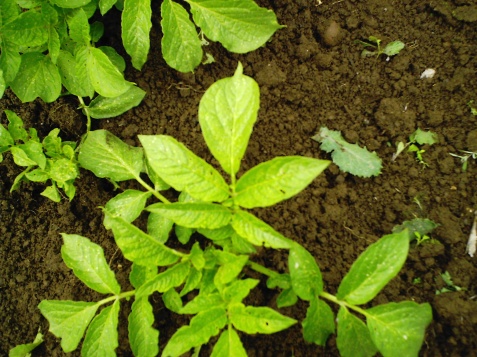Over the weekend, our across-the-street neighbor was raking up the many Japanese Maple leaves from his gorgeous tree, and so I ran out and asked him if I could take the leaves for my garden beds, pretty please? He said yes (not the first time for this same reason, I might add), and so away we hauled a bunch of beautiful tiny orange and gold leaves to dress our flower and vegetable beds. Some photos to illustrate:
A little bulb bed, tucked in for the winter with a couple of inches of Japanese Maple leaves for mulch.

Fruit trees mulched for the winter. My fruit tree row, weeded (and I was aided in this by the neighbor's chickens who like to come over and visit--there must have been bugs that they were excited to eat there) and mulched with a couple of inches of leaf mulch. Dec. 2011
-
They are already naturally small, so I do not have to chop them up like would have to do with full-sized maple leaves
-
They are free
-
They are amply available when I need them
In our climate, it tends to be best to use about a two-inch layer of leaves for mulching your flower and vegetable beds. Leave room around the plant crowns; don’t cover them with mulch. If you put more than two inches, it can sometimes become a haven for mice and other pests that like to live in the leaves if given the chance. I also like the small leaves better than large maple leaves, because the large leaves, if they are not chopped up fine, tend to stick together in our rainy climate and don’t break down very readily over the course of the winter, and they also become a haven for slugs, which will winter over and eat the plants that you have so carefully covered nearby.
Another type of “mulch”:
I just grouped my containers on the garage roof together, and covered them with several layers of clear plastic. Old clear shower curtains also work great for this, and are made from heavier plastic, which is better. Although it occasionally goes down as low as 18 degrees here, it is pretty rare, and this in times past has been enough protection to keep containers from splitting, and plants from dying in the containers. (Fingers crossed.)
Now here is a pretty plant combination (or two):

